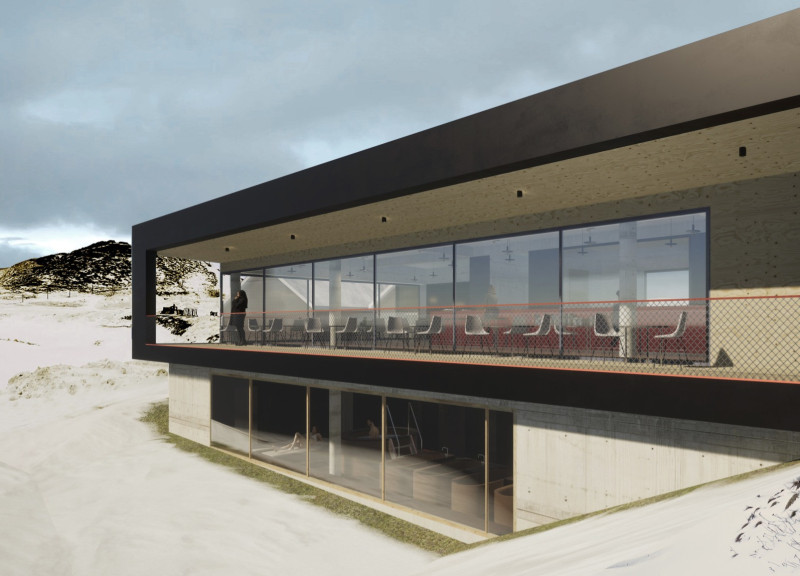5 key facts about this project
This project has been developed with a clear purpose in mind, aiming to provide a space that meets the various needs of its users while fostering a sense of connection to the surrounding area. The architecture emphasizes functionality, creating spaces that are versatile and adaptive to a variety of uses. This adaptability is central to the project, allowing the architecture to cater to different activities throughout the day and the year, thereby enhancing the community's engagement with the space.
Key features of the architectural design include an innovative use of materials, which plays a crucial role in both the aesthetic and performance aspects of the project. The selection of materials reflects a commitment to sustainability and durability, ensuring that the building will stand the test of time while harmonizing with the natural environment. Among the prominent materials used are local stone and timber, which not only reduce the project's carbon footprint but also add a sense of warmth and connection to nature. The interplay of these materials with glass elements enhances natural light penetration, allowing the interiors to be bright and inviting, while also providing views that connect occupants to the landscape outside.
The spatial organization within the project has been meticulously crafted to enhance the user experience. Open layouts encourage fluid movement between spaces, while strategically placed partitions offer necessary privacy without compromising the overall openness. This thoughtful arrangement fosters a sense of community and collaboration, ensuring that the architecture supports interaction among users. Key areas such as gathering spaces, meeting rooms, and recreational zones are designed to be both functional and flexible, capable of accommodating various scenarios, from workshops and meetings to casual social events.
One notable design approach is the incorporation of outdoor spaces into the overall architectural vision. Terraces, balconies, and landscaped gardens have been integrated, blurring the line between indoor and outdoor environments. This not only maximizes the usable area but also enhances the aesthetic quality of the project, creating tranquil spaces for relaxation and interaction. The landscaping complements the architecture, using native plants that require minimal irrigation and promote biodiversity, further emphasizing the project’s commitment to sustainability.
Another unique aspect of the project is its response to climate considerations. The design includes features such as overhangs and shading devices that mitigate solar gain, ensuring comfort in the hot months while optimizing energy efficiency. Natural ventilation strategies are employed to reduce reliance on mechanical systems, aligning with modern sustainable practices and lowering operational costs over the building's lifespan.
Every detail, from the choice of materials to the arrangement of spaces, reflects a meticulous attention to the project's social and environmental context. The architecture embodies a dialogue with its surroundings—literally and figuratively—inviting users to interact with both the space and the landscape. The overall design integrates architectural ideas that resonate on multiple levels, addressing practical needs while simultaneously enhancing users’ emotional and social experiences.
For those interested in delving deeper into this architectural undertaking, exploring the project presentation will provide valuable insights into the architectural plans, sections, and design approaches that shaped this endeavor. Engaging with the finer details will reveal how these elements come together to create a meaningful and impactful architectural experience.


























